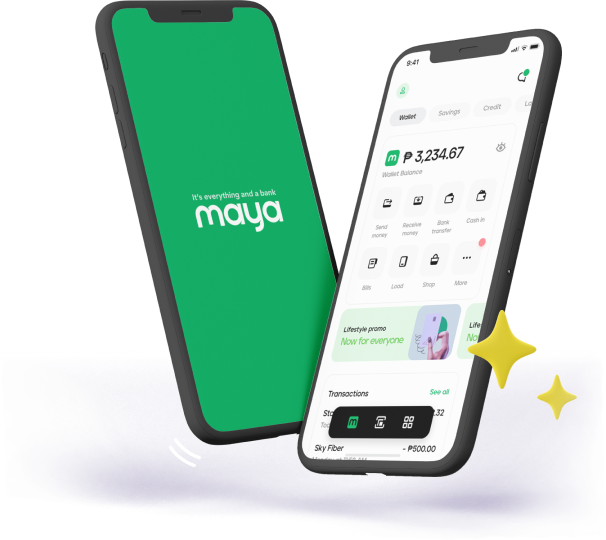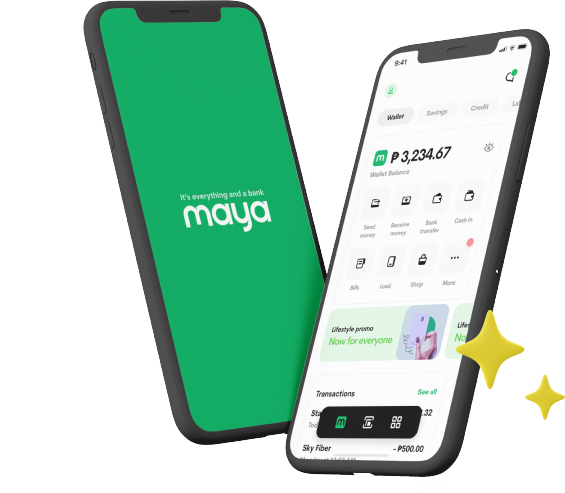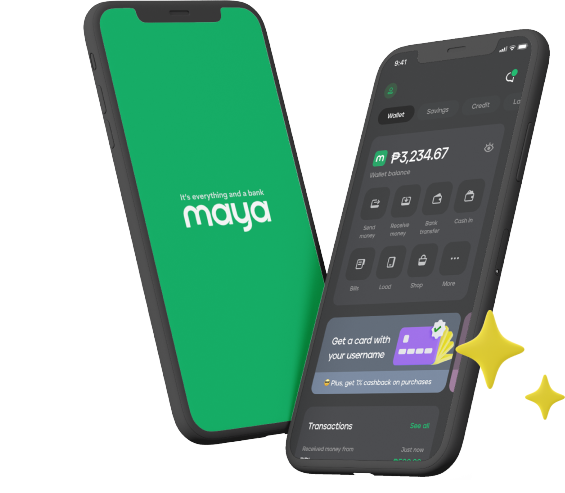- Home
- Services
- User Guide
- All Guides
- Activate Virtual Card
- Bank Transfer
- Bills Payment
- Cash In
- Claim Remittance
- Create an Account
- Crypto
- Email Verification
- Gaming
- Get a Maya Card
- Get Protected
- Link Physical Card
- Mobile Prepaid Load
- Mobile Data
- Pay using Maya Card
- Pay with Maya online
- Pay with QR
- Save
- Send Money
- Funds
- Travel with Maya
- Upgrade Account
- Use Abroad
- Deals
- Store
- Partner Merchants
- Stories
- About Maya
- Help & Support
- Contact Us
- Home
- Services
- User Guide
- All Guides
- Link Physical Card
- Mobile Data
- Activate Virtual Card
- Mobile Prepaid Load
- Bank Transfer
- Pay using Maya Card
- Bills Payment
- Pay with Maya online
- Cash In
- Pay with QR
- Claim Remittance
- Create an Account
- Save
- Crypto
- Send Money
- Email Verification
- Send Money via @Username
- Funds
- Travel with Maya
- Gaming
- Get a Maya Card
- Use Abroad
- Get Protected
- Deals
- Help & Support
- Store
- Partner Merchants
- Stories
It’s surprising how many parents agree that preparation is essential for their child’s education, yet so many fail to build up the necessary funds to adequately meet their goals. Even if you think your child is a long way off from college, there’s no better time than today to start thinking about their education.
Experts say that most Filipino parents are not prepared to face the financial responsibilities of paying for school tuition and fees. And for those who claim they are, a lot of times their plans don’t really account for setbacks or inflation.
From pencils and uniforms to textbooks and allowances, the costs of sending your child to school will go up as your child also climbs up the educational ladder. This makes building up an education fund even more important.
Factors to Consider When Building an Education Fund
The Inflation of the Cost of Education
Experts are quick to point out that the cost of education in the Philippines is significantly higher today compared to two decades ago. How much will it be two decades from now? According to some experts, the inflation of tuition and fees is significantly higher than the nation’s inflation rate.
National inflation rate: Average of 4% every year
Tuition and fees inflation rate: 10% or more every year
As such, it is important to factor in the percentage by which the cost of education increases annually if you want to get a good picture about just how much you’re going to need to continue sending your child to school every year.
The School You Want Your Child to Attend
If you’ve made up your mind on which school to send your child to, consider how realistic this is. For example, you might be thinking of having your child attend a private school. Huge financial setbacks may force you to transfer your child to a cheaper school just to keep up with the cost of tuition and fees. This may have serious implications on the education and the emotional and mental wellbeing of your child.
Also, imagine what the future will look like. Project yourself into the future. This may help you have a better idea of which colleges your child will likely attend, and what courses are in demand.
Now that you’ve made these two important considerations, it’s time to make a list of the things you need to do in order to build an educational fund for your child.
A Step By Step Guide to Creating an Education Fund
Step 1: Compute Your Target Amount
There’s no one-size-fits-all approach to setting the right amount for your child’s education, although there are several methods you can try:
- Option 1: Choose the desired educational institution, and factor in the current tuition and fees, the annual rate of increase of their tuition and fees, and the number of years your child will go to that school.
- Option 2: Compute a target amount based on the average cost of tuition (without targeting a specific school), and factor in yearly increases and the number of years your child will be studying.
- Option 3: Decide on a lump sum that can realistically cover educational expenses so your child can decide for themselves how to fund their education, which course to take in college, and more.
Naturally, you’ll also have to consider your current situation. Don’t be afraid to come up with your own way of computing a target amount that’s within your financial capability.
The goal of this step isn’t to pressure you to pile up as much money as you can but to give yourself options to match your current income stream and parenting style.
Step 2: Create a Savings Strategy
Once you know how much to save up for, you can either take out a percentage or a fixed amount from your salary every month for the education fund.
Saving requires practice and discipline. If your employer agrees, you can request for a fixed portion of your monthly salary to be automatically deposited into the education fund account every payday to reduce hassle, as well as the temptation to spend the money elsewhere.
Practical tips to save up for your child’s education fund:
- Follow the 80/20, 50/30/20, or some other saving formula. The idea behind these saving formulas is to allocate at least 20% of your income to savings each month..
- Also allocate 10% of your monthly salary for your child’s education fund.
- Train your child to pitch in money for his or her fund. This is a good way to teach financial responsibility.
Another worthwhile idea to consider is to open up a low-capital business that can serve as an additional income source. If you have a lot of free time, this is a good option.
Step 3: Search for Good Investments
Banks can offer a 1% annual interest (usually lower) on your savings.
While this is better than letting your money lose value inside a cash box at home, the goal should be to beat the inflation rate of the cost of education, which is at least 10%.
So what’s the solution? For many, it’s to invest.
There are several good investment vehicles you should look into when deciding where to put your money. But what’s an investment vehicle? Simply put, an investment vehicle is any financial product that you can use to gain positive returns as an investor. These assets run the gamut from shares of stocks, bonds, and money market securities to real assets like gold and real estate. Choosing the right type of investment vehicle is important if you want to preserve and grow the value of the capital you intend to use for your child’s education.
Investment Vehicles to Consider
Experts recommend putting your money in one or more of the following investment vehicles to build up your child’s education fund:
1. Education Plans
There are numerous investment plans to choose from, and they’re typically offered by banks and some life insurance companies. Many, if not all, of the products offered, however, will be tailored for long term growth — usually spanning 5 to 18 years.
2. Variable Unit Life (VUL) Insurance
VUL combines life insurance with an investment component, which means your children will be ensured to receive a certain amount in case of your death or permanent disability. At the same time, you’ll have money invested in the market or in bonds that will also continue to grow.
3. Mutual Funds and Unit Investment Trust Funds (UITFs)
Mutual funds and UITFs grow your money in the same way, by pooling your money together with the money of other investors to let it grow. The main difference is that mutual funds are typically offered by mutual fund companies while UITFs are offered by banks. They’re both great options for parents who want a relatively hassle-free means of building up an education fund.
4. Stocks
If you have some 10 years until your child will need his or her education fund, it’s a perfect time to invest in high-return stocks. The growth rate you can expect out of putting your money in high-return (and high-risk) stock options is significantly higher than putting your money in low-risk investment vehicles. Thankfully, the long investment horizon will allow you to weather most of these risks.
A word of caution, however: Stay away from gimmicky investment plans that sound too good to be true. Always seek a second opinion before you put your money into an investment. Chances are if an offer sounds too good to be true, it probably is.
Step 4: Make Your Move Early
Planning for your child’s education is a long-term goal. And the best time to start planning is as soon as they are born. The longer time you have until your child enters college, the more you can grow the fund that your child needs.
One good reason to start early is because of the compounded growth involved when you invest your money. This is when your money is reinvested and continues to grow, even with small yet regular contributions.
Start Small But Step It Up
The target amount may seem astronomical, but don’t let this stop you. Start with however much you can. The important thing is to build up the habit of continuously putting money into your child’s education fund.
Moreover, while saving up and investing, don’t forget to apply the concept up of stepping up. For example, if you’re currently earning ₱35,000 and saving ₱7,000, you should also increase your saving amount whenever your salary goes up — following the 80/20 saving formula shared above.
Let Maya Help You Stick to Your Budget
If you already have kids in school and you’re also trying to build an education fund for a younger child, you’ll need extra help. Here’s how Maya can make it easier for you to build up a fund:
- Promos and Discounts
Maya occasionally offers great promos and deals for students, which can help you save more money. - Easy Transfers
You won’t ever have to worry about asking a friend or relative to manually give allowances. With Maya, you can send the money electronically within seconds. This is especially useful if your child is in college and is attending school in another city. - Transparency
Another advantage of using Maya is for your kids to learn how to manage their finances. They can easily see what they’re spending their money on and learn a little budgeting for themselves. - Teaches Financial Responsibility
If your child hasn’t gotten quite used to budgeting, you can start by sending allowances every week. And as your child builds up more control over their finances, you can then switch to monthly allowances, which also makes your child feel more rewarded. - Convenient Tuition Payments
You can skip waiting in line at your child’s school to pay for fees by using Maya’s Bills Payment feature. If the school is a Maya partner institution, you can pay tuition and fees from anywhere in the world using just the Maya app.
Step 5: Monitor Your Progress
Building up an education fund is a continuous process. From time to time, you will need to compare your progress to your goal.
Sometimes, you may find that your savings and contribution targets were too ambitious, necessitating a change in your spending or saving habits. At other times, you may be forced to search for other income streams to meet the target amount.
Building up a fund requires you to continuously assess your strategy and your current financial situation. With that in mind, you will undoubtedly have to go through several adjustments along the way.
Don’t be too hard on yourself, especially if you’re just starting out. What’s important is that you continue to set aside money every month (or every payday) and search for investment opportunities that will better grow your child’s education fund.
Step 6: Plan for Setbacks
No one can accurately predict setbacks, and no one wants to ever think about them. But they are bound to happen, so it’s important to include them in your financial plan.
Here are examples of financial setbacks that you should take into consideration so you’re better prepared:
- Medical emergencies
- Economic recessions (resulting in mass layoffs and widespread difficulty in employment)
- Pay cuts
- Accidents
- Unemployment
- Your business shutting down
- Death of any one of the breadwinners in the family
How to Deal with Financial Setbacks
So what do you do when a setback happens? First of all, don’t panic. You won’t be able to think clearly, and it will be harder for you to make smart choices if you descend to a downward mental or emotional spiral. Instead, you should view setbacks as a time for planning. Some experts even advise against doing anything at all for the time being, especially if the setback inflicts a severe emotional and psychological blow. Letting the initial waves of grief, anger, and fear dissipate first before you make a big decision will often allow you to see a clearer picture of what you should do next. Once you’ve calmed yourself down, you can start to look for opportunities. You can even turn bad situations into successes if you can get creative enough. Think outside of the box, let yourself explore different ideas without prejudgement, and you may just find yourself with an “aha!” moment.
What If You Realize You Started Too Late?
If you have decided to save up for your child’s education fund a bit late, then it will be more challenging to reach the target amount in time. However, you do have other options available. Consider speaking to banks and financial planners to find out how you can let your money grow quickly and safely.
And if you’re still below the target amount when your child needs his or her education fund, you can entertain other options such as taking out a loan that lets you pay back the amount in more manageable terms.
Takeaway
Building your child’s education fund is not a linear process. Often, you’ll have to revisit your goals and change how you are handling your finances. Regardless of how big or small the target amount is, there’s no question that accomplishing it will take commitment, flexibility, and creativity.
Don’t be afraid to adjust your investment strategy and take risks where you can afford to. While it does require a lot of hard work and planning, the reward you get will be knowing that your child will have a bigger chance at a brighter future because of your efforts.
Maya Customer Hotline: (+632) 8845-7788
Domestic Toll-Free: 1-800-1084-57788
Mobile: Dial *788 using your Smart mobile phone
Domestic Toll-Free: 1-800-1084-57788
Mobile: Dial *788 using your Smart mobile phone
Maya is powered by the country's only end-to-end digital payments company Maya Philippines, Inc. and Maya Bank, Inc. for digital banking services. Maya Philippines, Inc. and Maya Bank, Inc. are regulated by the Bangko Sentral ng Pilipinas.
www.bsp.gov.ph
Scan to download
the Maya app
the Maya app
© Copyright Maya 2022 All Rights Reserved.





